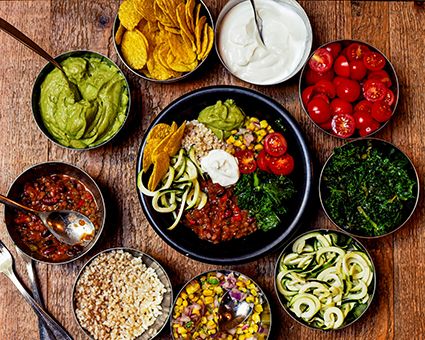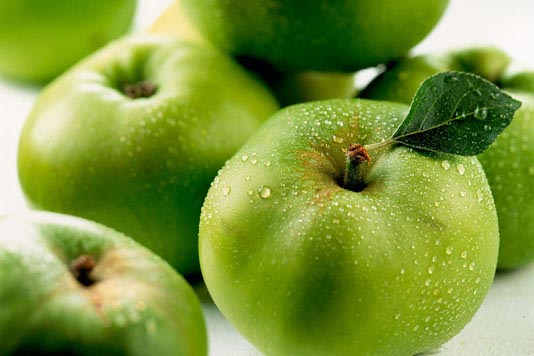
If you have seen my Theme Reveal for the A2Z Challenge 2022, then you will know that I am writing about becoming Vegetarian gradually as a response to the crisis in food supply chains sparked by the pandemic and made worse by the WAR in Ukraine. As well, I am keeping to the theme I originally planned of food which can be eaten on their own as well as becoming ingredients in other dishes…
Analogues of Meat – One Route into Vegetarian Eating

The first time I knowingly met vegetarians, was when my family visited my cousin’s family in Walthamstow, London. My Uncle John was brought up vegetarian and now he was doing the same with his family. There were a lot of dishes we were familiar with from my mother’s cooking, Cauliflower Cheese and, Macaroni Cheese, but then there were Vegetarian Sausages. Since this was back in the 60’s, early 70’s, I am not sure what the vegetarian protein was in those days, but they weren’t great, tastewise. They were sausage-shaped though they obviously didn’t have traditional sausage skins (since they are made from sections of intestines ) so they were straight with a synthetic skin, didn’t brown right well, and seemed to have all the rusk but none of the flavour – a fact that lashings of vegetarian gravy (though having more umami than the sausages) – did nothing to improve. This was the Analogue approach to trying to promote the vegetarian lifestyle – make something that imitates a meat product – sad to say – nobody was fooled! The same approach is still being used with vegetarian burgers and even Cauliflower ‘Steak’ and it seems to me, the wrong approach to set new foods up for comparison with the world of meat because for the sceptics, the analogue imitator is bound to fail at least the taste test, if not the texture, nutrition and appearance tests.
Meat has a strong taste – it is further enhanced by caramelising the outside, and mostly, it is easy to cook and pairs well with equally, simply cooked vegetables – ‘meat and two veg.’ So the first analogue to avoid is just that – why not have a Beetroot Pattie with a Ragout of Stir-fried Vegetables? You don’t need potatoes for carbohydrate since there will be carbohydrate in the pattie and perhaps more in the stir-fried vegetables. Now you are eating something completely different. More of stir-frying later in the challenge, but in case that sounds like a hassle, or you think it takes longer, stir-frying is quick, leaves the vegetables more nutritious and tastes good too and it will take you lees time than boiling potatoes! Since that first encounter with veggie sausages, vegetarian analogues have come a long way, recipes from around the world have turned up on our western shelves, Falafel, for example – or the principle of their cooking, flavours and ingredients, have been incorporated into the latest offerings from the veggie section of the supermarket. Flavours are stronger, chilli alone is incorporated in quantities that would have frightened vegetarians in the 60s. If you cook from scratch, ingredients and spices from around the world are available – although these may take a hit from supply chain problems in the Post Pandemic/ Ukraine scenario. The internet is full of people sharing recipes from all over the world. The before and after cooking photos of vegetarian sausages at top, illustrate some of the vast variety available today – and let’s not forget that consumer demands for choice, have driven meat sausages to more and more additions – cheese, apple, herbs, cranberries, curry spices – so is it so great a stretch to drop the meat altogether and try a meat-free, no a plant-based sausage some nights at the very least?

Photo by Ralph (Ravi) Kayden on Unsplash
If you are already Vegetarian, or even Vegan, then I am preaching to the choir, but I hope you may find some ideas or feel free to contribute via the comments, your own experiences, recipes and ideas…
Apples as an Ingredient…

I used to say that if there were two foods that I could live off solely, they would be Apples, and Bread! Now that I am older and familial diabetes is kicking in, I try to eat less bread and with both apples and bread, I look for quality and variety rather than quantity! Apples are definitely a food that can be eaten fresh but have spawned a plethora of recipes in which they are the principal ingredient, not to mention drinks, cider and calvados spring to mind.
Apples are divided into dessert and cookers but these are not fixed – you can cook with dessert apples and cookers can become eaters. Due to commercial pressures, the number of varieties easily available, have contracted, so that in Britain, most people will only know of one variety of cooking apple – the Bramley, which you can read about here. But when I was a child and we had two magnificent Bramley trees in the garden, leftovers from the orchard that had existed before the street was built, my parents would carefully select Bramleys, pack them into cushioned trays and store in the attic, where, after the occasional inspection to weed out those that had rotted – we were eventually rewarded with a slightly wrinkled but delicious eating apple. The Bramley, when freshly picked, is too tart for most people to eat, hence it’s utility for cooking, whence it keeps a fruity taste; by contrast, most dessert, or eating apples are too mild in flavour, and once cooked, they are often disappointing, taste-wise. This tartness of cooking apples, means they are full of Pectin – the thing that helps a gel form from sugar in fruit when you are jam-making – hence the combination of, say, Blackberry and Apple Jam, since blackberries do not have enough pectin to set on their own. Recipe quantities couldn’t be easier:-
50% Blackberries
50% Bramley apple
A weight of Sugar equal to the combined fruits.
In case you have never made jam before, I wrote my own simple instructions, since there was always at least one unnecessary instruction in all the ones I searched out and it is in my Theme Reveal.
So I am not saying you should never use dessert apples as ingredients because when it comes to cooking especially, rules are meant to be broken and expediency is the mother of invention – so experiment away. So just what are my favourite English apples? I am not being nationalistic here, but the best apple is an apple fresh, in it’s own season and that means, in it’s own country. There are apples that have been bred to travel such as the tough-skinned, American Red Delicious, or even the French Golden Delicious – which was also American in the first place but was brought in to provide a living for French ex-pats who had been forced out of Algeria. This government-backed scheme did great damage to English varieties with its bland, but long keeping qualities. I rest my case! English seasonal apples vary from the champagne-like burst of flavour of Discovery, early in the season, to the aristocratic sounding, seasonally attired Egremont Russet which comes at the autumnal end of the season.


You couldn’t imagine two more different apples – Discovery, so red of skin that it continues into the very flesh, which is soft and juicy and a sensual discovery indeed. The Russet is very firm until the exact point of ripeness when it is perfect for a brief moment – and then it goes wooly! But when it is perfectly ripe, it is redolent of Autumn, mellow and mature…
But back to the apple as an ingredient. I once helped set up a wholefood shop wherein we sold some lovely wholefoody cakes, some of which were made for sale in London’s famous Camden Lock. The bakers who made them, were willing to sell them to us, but not ar sufficient wholesale discount, so my boss asked me to reverse engineer them, so here is my recipe for Fresh Apple Oat Cake.
Fill an 8” cake tin, ¾ full of oat
Tip into a mixing bowl, add a handful of dried fruit, and grate the largest Bramley apple you can fid into the bowl and mix well
Grease the tin and line bottom with baking parchment
Spoon mixture in and bake in a moderate oven till the top begins to brown
Soften chopped Dates in boiling water until mashable, then spread onto the top of the cooled cake – Enjoy!
You can add, spices of your choice, add extra dried fruit and even grated, creamed coconut for a more luxurious version – but this is the basic cake.
There are so many recipes that use apples as an ingredient – Apple Crumble, Apple Charlotte, Apple Chutney, Red Cabbage and Apple baked in Cider – all of these findable on the internet and you can search as well as I, but I will direct you to one more, based on my most treasured cake recipe book Good Housekeeping’s ‘Cakes and Biscuits’, It is an Apple and Crumbly Cheese Cake – the Lancashire or Cheshire style of cheese is sandwiched between cake batter loaded with chopped apple and nuts – delicious…
On Apples, ‘I could have blogged all night’ – apologies to ‘My Fair Lady’.
